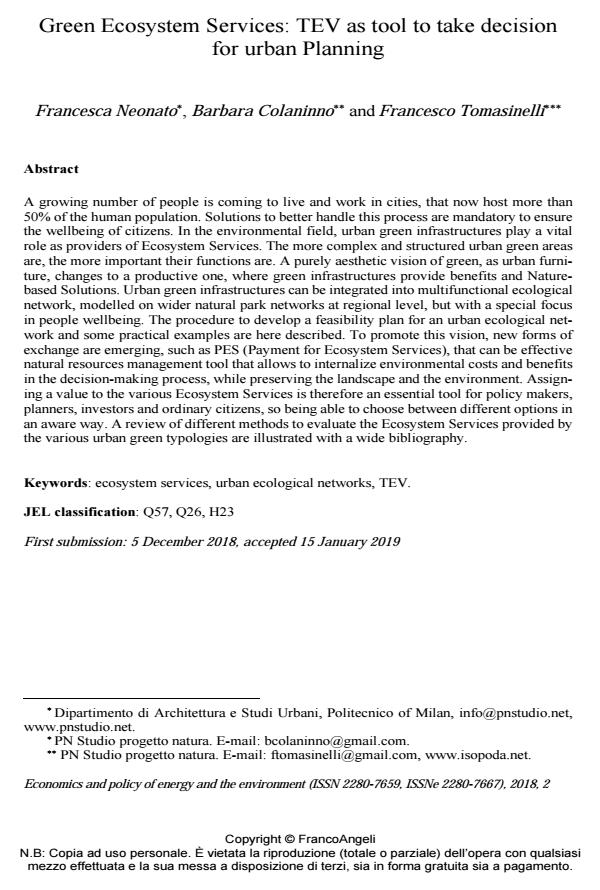Green Ecosystem Services: TEV as tool to take decision for urban Planning
Titolo Rivista ECONOMICS AND POLICY OF ENERGY AND THE ENVIRONMENT
Autori/Curatori Francesca Neonato, Barbara Colaninno, Francesco Tomasinelli
Anno di pubblicazione 2019 Fascicolo 2018/2
Lingua Inglese Numero pagine 28 P. 85-112 Dimensione file 434 KB
DOI 10.3280/EFE2018-002005
Il DOI è il codice a barre della proprietà intellettuale: per saperne di più
clicca qui
Qui sotto puoi vedere in anteprima la prima pagina di questo articolo.
Se questo articolo ti interessa, lo puoi acquistare (e scaricare in formato pdf) seguendo le facili indicazioni per acquistare il download credit. Acquista Download Credits per scaricare questo Articolo in formato PDF

FrancoAngeli è membro della Publishers International Linking Association, Inc (PILA)associazione indipendente e non profit per facilitare (attraverso i servizi tecnologici implementati da CrossRef.org) l’accesso degli studiosi ai contenuti digitali nelle pubblicazioni professionali e scientifiche
A growing number of people is coming to live and work in cities, that now host more than 50% of the human population. Solutions to better handle this process are mandatory to ensure the wellbeing of citizens. In the environmental field, urban green infrastructures play a vital role as providers of Ecosystem Services. The more complex and structured urban green areas are, the more important their functions are. A purely aesthetic vision of green, as urban furniture, changes to a productive one, where green infrastructures provide benefits and Naturebased Solutions. Urban green infrastructures can be integrated into multifunctional ecological network, modelled on wider natural park networks at regional level, but with a special focus in people wellbeing. The procedure to develop a feasibility plan for an urban ecological network and some practical examples are here described. To promote this vision, new forms of exchange are emerging, such as PES (Payment for Ecosystem Services), that can be effective natural resources management tool that allows to internalize environmental costs and benefits in the decision-making process, while preserving the landscape and the environment. Assigning a value to the various Ecosystem Services is therefore an essential tool for policy makers, planners, investors and ordinary citizens, so being able to choose between different options in an aware way. A review of different methods to evaluate the Ecosystem Services provided by the various urban green typologies are illustrated with a wide bibliography.
Parole chiave:Ecosystem services, urban ecological networks, TEV.
Jel codes:Q57, Q26, H23
- A Systematic Literature Review of Historic Garden Management and Its Economic Aspects Cassandra Funsten, Valeria Borsellino, Emanuele Schimmenti, in Sustainability /2020 pp.10679
DOI: 10.3390/su122410679
Francesca Neonato, Barbara Colaninno, Francesco Tomasinelli, Green Ecosystem Services: TEV as tool to take decision for urban Planning in "ECONOMICS AND POLICY OF ENERGY AND THE ENVIRONMENT" 2/2018, pp 85-112, DOI: 10.3280/EFE2018-002005